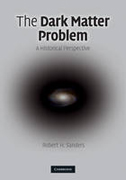
Most astronomers and physicists now believe that the matter content of the Universe is dominated by dark matter: hypothetical particles which interact withnormal matter primarily through the force of gravity. Though invisible to current direct detection methods, dark matter can explain a variety of astronomical observations. This book describes how this theory has developed over the past 75 years, and why it is now a central feature of extragalactic astronomy and cosmology. Current attempts to directly detect dark matter locally are discussed, together with the implications for particle physics. The author commentson the sociology of these developments, demonstrating how and why scientists work and interact. Modified Newtonian Dynamics (MOND), the leading alternativeto this theory, is also presented. This fascinating overview will interest cosmologists, astronomers and particle physicists. Mathematics is kept to a minimum, so the book can be understood by non-specialists. INDICE: 1. Introduction; 2. Early history of the dark matter hypothesis; 3. The stability of disk galaxies: the dark halo solutions; 4. Direct evidence:extended rotation curves of spiral galaxies; 5. The maximum disk: light traces mass; 6. Cosmology and the birth of astroparticle physics; 7. Clusters revisited: missing mass found; 8. CDM confronts galaxy rotation curves; 9. The new cosmology: dark matter is not enough; 10. An alternative to dark matter: Modified Newtonian Dynamics; 11. Seeing dark matter: the theory and practice of detection; 12. Reflections: a personal point of view; Appendix; References; Index.
- ISBN: 978-0-521-11301-4
- Editorial: Cambridge University
- Encuadernacion: Cartoné
- Páginas: 214
- Fecha Publicación: 01/06/2010
- Nº Volúmenes: 1
- Idioma: Inglés
